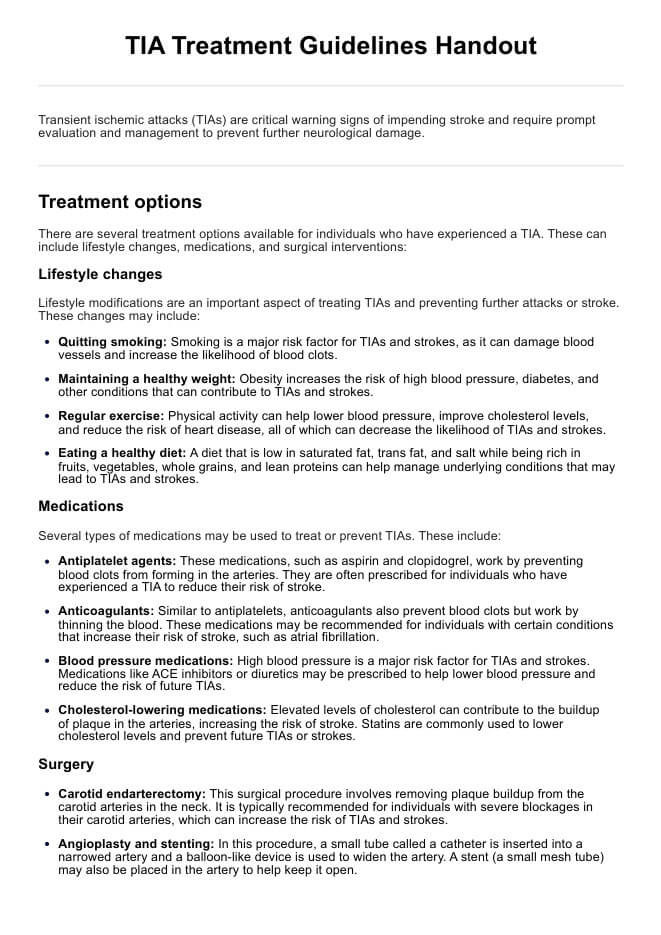The usual treatment for a TIA involves managing underlying risk factors such as hypertension, diabetes, and high cholesterol through lifestyle changes and medications to prevent a future stroke.

TIA Treatment Guidelines Handout
Download Carepatron's free PDF handout and example for TIA treatment guidelines to help provide information and guidance on treating transient ischemic attacks (TIAs).
Use Template
TIA Treatment Guidelines Handout Template
Commonly asked questions
Antiplatelet therapy, typically with aspirin, is considered the first line of medication for TIA to reduce the risk of blood clot formation that can lead to a stroke.
Immediately after a transient ischaemic attack (TIA), seek medical attention even if symptoms have resolved. It's crucial to undergo diagnostic tests to determine the cause and receive appropriate treatment to prevent a recurrent stroke risk.
EHR and practice management software
Get started for free
*No credit card required
Free
$0/usd
Unlimited clients
Telehealth
1GB of storage
Client portal text
Automated billing and online payments











